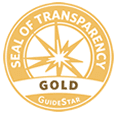Biofeedback is a form of therapy that involves using sensors to measure physiological responses, such as heart rate, skin temperature, and muscle tension. These sensors provide real-time feedback to the user, allowing them to learn how to control their body’s responses to stress. Biofeedback has been shown to be an effective treatment for a variety of conditions, including post-traumatic stress disorder (PTSD) and traumatic brain injury (TBI).
One of the main benefits of biofeedback is that it provides a safe, non-invasive way for individuals to learn about and manage their own body’s responses to stress. For Veterans and others who have experienced trauma, this can be especially important. Many individuals with PTSD and TBI struggle with issues like hyperarousal, which can lead to a variety of physical and emotional symptoms. By learning to control their physiological responses, individuals can better manage their symptoms and improve their overall quality of life.
There are several different types of biofeedback tools available, including:
- Heart rate variability (HRV) biofeedback: This type of biofeedback uses sensors to measure the variability in a person’s heart rate. HRV is a measure of the time between each heartbeat, and it is thought to be a good indicator of overall stress levels. By learning to control their HRV, individuals can improve their ability to relax and manage stress.
- Electrodermal activity (EDA) biofeedback: EDA biofeedback uses sensors to measure the electrical activity of the skin, which can be a good indicator of stress levels. By learning to control their EDA, individuals can improve their ability to manage stress and reduce anxiety.
- Thermal biofeedback: Thermal biofeedback uses sensors to measure the temperature of the skin. By learning to control their skin temperature, individuals can improve their ability to relax and manage stress.
- Electromyography (EMG) biofeedback: EMG biofeedback uses sensors to measure the electrical activity of the muscles. By learning to control their muscle tension, individuals can reduce physical symptoms of stress, such as headaches and muscle tension.
Biofeedback can be used in combination with other forms of therapy, such as cognitive-behavioral therapy (CBT), to help individuals with PTSD and TBI manage their symptoms and improve their overall quality of life. It is often used in conjunction with other treatments, such as medication, to provide a more comprehensive approach to care.
For Veterans and others looking to heal from PTSD and TBI, biofeedback can be an important part of the recovery process. It provides a safe, non-invasive way for individuals to learn about and manage their own body’s responses to stress, which can be a key factor in improving overall well-being. By learning to control their physiological responses, individuals can better manage their symptoms and improve their quality of life.
Overall, biofeedback is a powerful tool that can be an effective treatment for a variety of conditions, including PTSD and TBI. By providing real-time feedback to the user, it allows individuals to learn about and manage their own body’s responses to stress, which can be a key factor in improving overall well-being. If you or someone you know is struggling with PTSD or TBI, consider seeking out biofeedback therapy as a way to improve symptoms and quality of life.
Veterans attending Operation Red Wings Foundation retreat will receive a biofeedback device, learn the benefits of it’s use and take it home for continued use. Sign up for a retreat today at https://orwfoundation.org/in-person-retreats/#form





